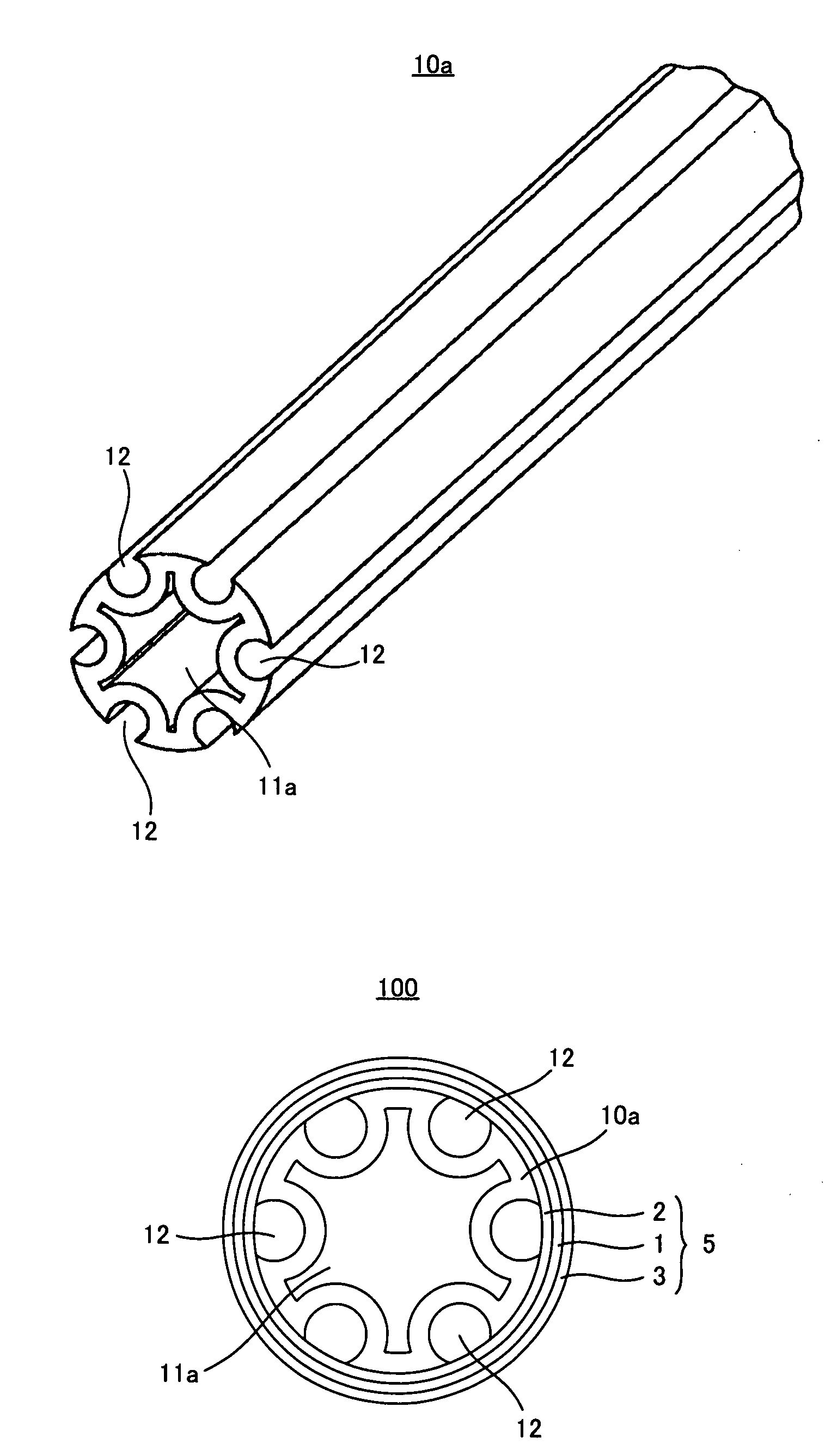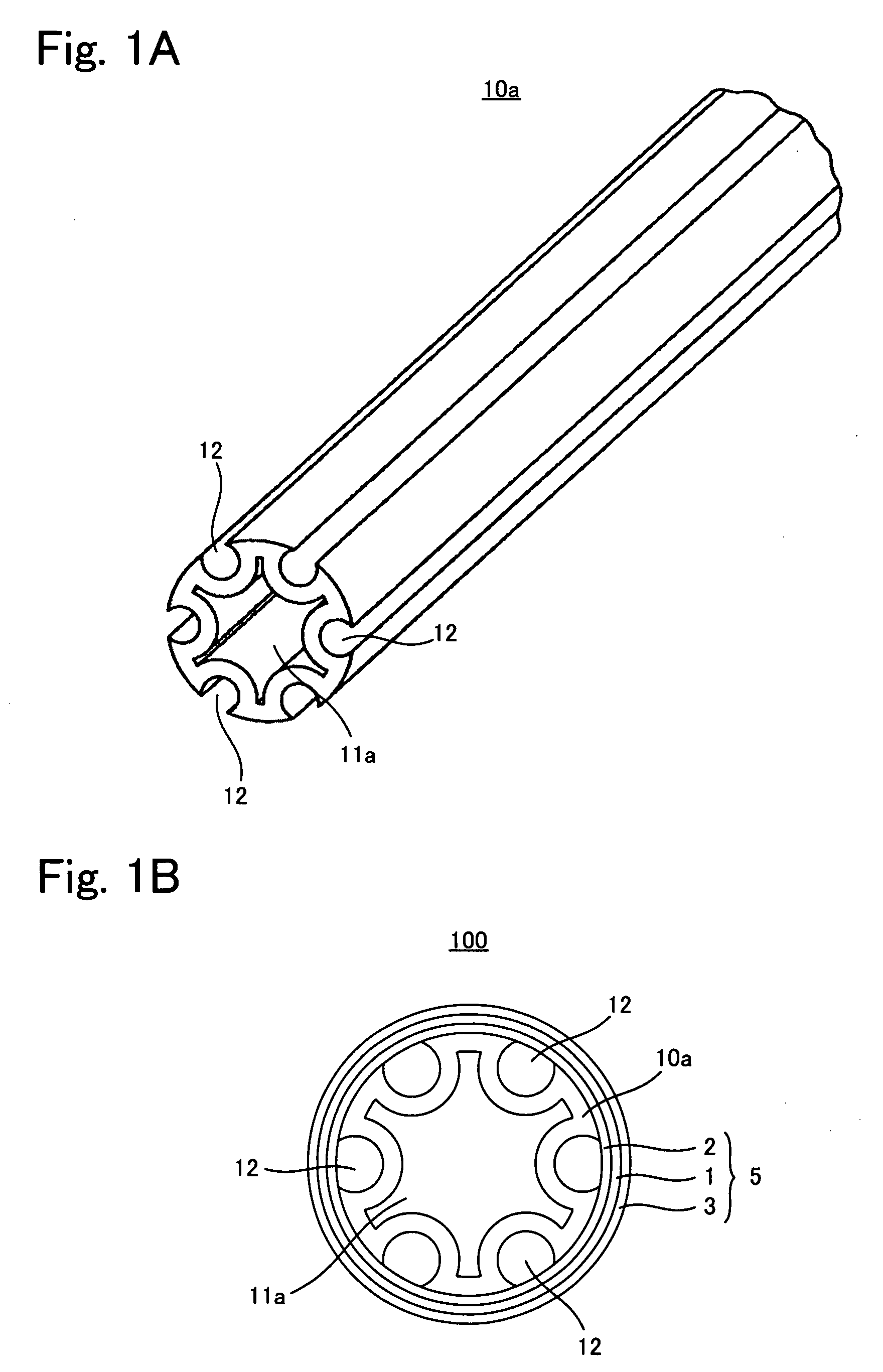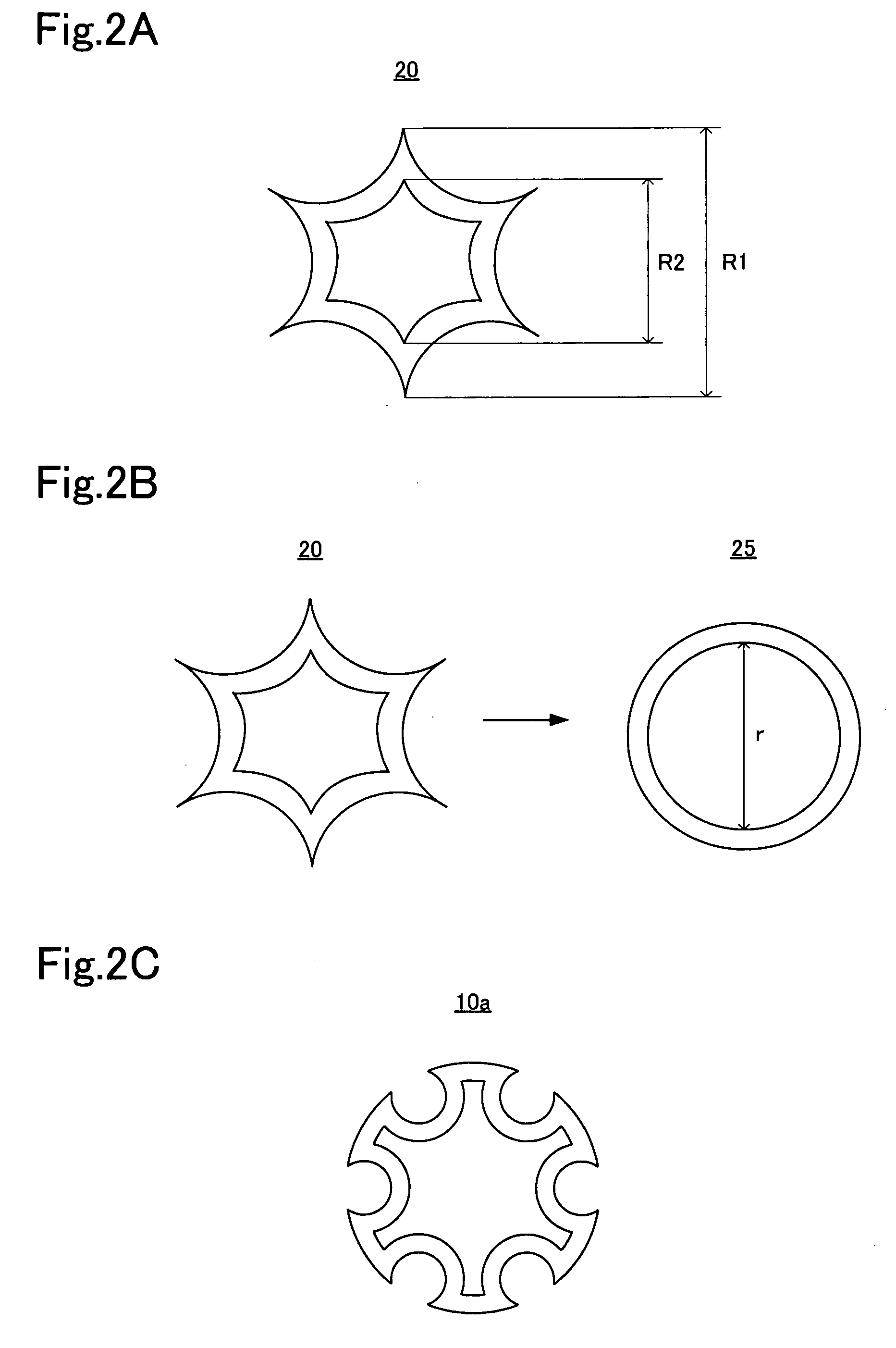Fuel Cell
a fuel cell and fuel cell technology, applied in the field of fuel cells, can solve the problems of disadvantageous heat exchange efficiency, insufficient electromotive force to be used as a power source of a battery car, and structurally difficult to increase the output density per unit area of the fuel cell in the plane form, so as to improve heat exchange efficiency and power generation performance, and improve gas diffusivity
- Summary
- Abstract
- Description
- Claims
- Application Information
AI Technical Summary
Benefits of technology
Problems solved by technology
Method used
Image
Examples
first embodiment
[0033]As shown in FIG. 1A, an internal charge collector 10a is of a hollow shape including a hollow portion 11a, and reaction gas channels 12 each including an opening on its outer circumferential surface are formed in parallel to an axial direction of the internal charge collector. A hollow MEA 5 including hollow electrode 2, an electrolyte membrane 1, and an electrode is arranged outside of the internal charge collector 10a, thereby forming a tubular cell 100 (see FIG. 1B).
[0034]In this manner, the internal charge collector 10a according to the present invention includes the hollow portion 11a. Due to this, if a heat medium is distributed into the hollow portion 11a, heat exchange can be made between the heat medium and the hollow MEA 5 via the internal charge collector 10a at a location quite close to the hollow MEA 5. Moreover, since the reaction gas channels 12 are formed on the outer peripheral surface of the internal charge collector 10 according to the first embodiment, the...
second embodiment
[0039]As shown in FIG. 3A, an internal charge collector 10b is of a hollow shape including a hollow portion 11b, and reaction gas channels 12 each including an opening on its outer circumferential surface are formed on an outer peripheral surface of the internal charge collector. Heat conducting members 15 made of a material (e.g., Cu, At or Pt) having higher heat conductivity than that of constituent elements of the internal charge collector 10b are provided in a thick portion of the internal charge collector 10b. A hollow MEA 5 is provided outside of the internal charge collector 10b, thereby forming a tubular cell 200 (see FIG. 3B).
[0040]In this manner, the internal charge collector 10a according to the second embodiment includes the hollow portion 11b and the reaction gas channels 12, and includes the heat conducting members 15 in its thick portion. Due to this, the internal charge collector 10a has good corrosion resistance. On the other hand, even if the thick portion of the ...
PUM
| Property | Measurement | Unit |
|---|---|---|
| electromotive force | aaaaa | aaaaa |
| temperature | aaaaa | aaaaa |
| area | aaaaa | aaaaa |
Abstract
Description
Claims
Application Information
 Login to View More
Login to View More - R&D
- Intellectual Property
- Life Sciences
- Materials
- Tech Scout
- Unparalleled Data Quality
- Higher Quality Content
- 60% Fewer Hallucinations
Browse by: Latest US Patents, China's latest patents, Technical Efficacy Thesaurus, Application Domain, Technology Topic, Popular Technical Reports.
© 2025 PatSnap. All rights reserved.Legal|Privacy policy|Modern Slavery Act Transparency Statement|Sitemap|About US| Contact US: help@patsnap.com



